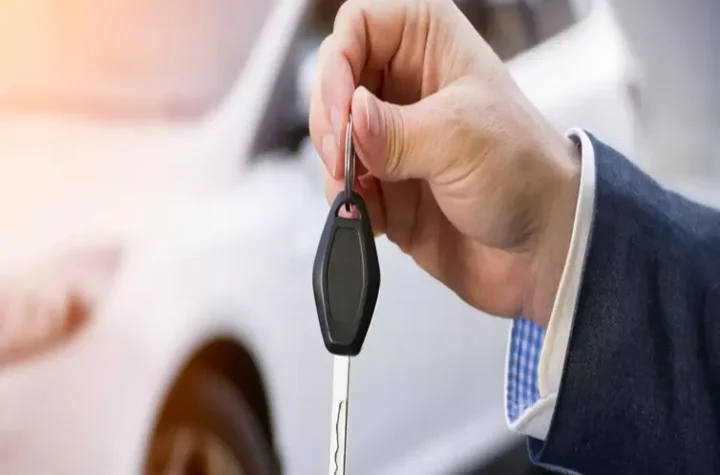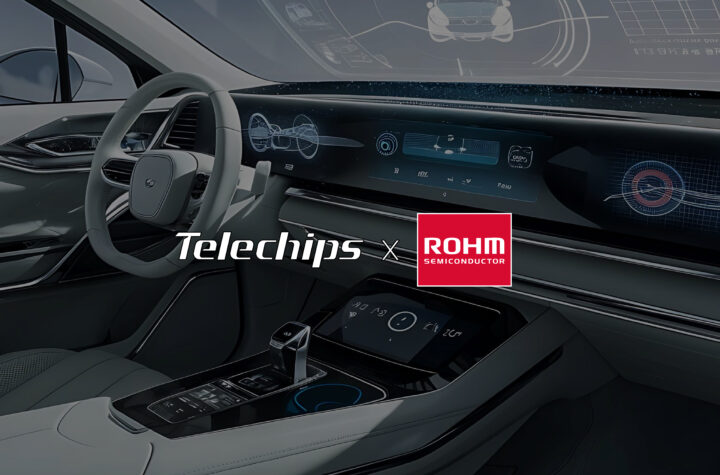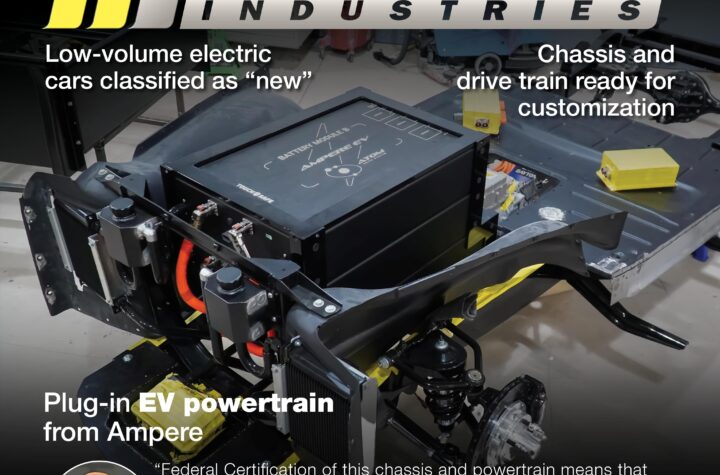
Controlled Power Technologies (CPT), a major sponsor of the recent 48V hybrid vehicle conference in Germany, together with leading car makers and tier 1 suppliers, discussed the need for an internationally agreed 48V electrical standard. This is required by the global automotive industry to achieve the economies of scale demanded by original equipment manufacturers. CPT, together with other sponsors, including AVL and Ricardo, is in the vanguard of 48V mild hybrid developments being driven by ever tightening European CO2 regulations and potentially a new and more aggressive test cycle.
Keynote speaker Florian Kühnlenz, responsible for series development of low voltage energy systems at Volkswagen AG, set the scene with a presentation of the electric and electronic architecture requirements of dual voltage power supplies in vehicles at 12 volts and 48 volts; with initial steps already having been taken for the adoption of the proposed LV148 standard suggested by Audi, BMW, Daimler, Porsche and Volkswagen.
Kühnlenz’ outlook is that the introduction of a second voltage at 48 volts addresses new challenges for automotive electrical and electronic systems, but that most issues have now been identified with preliminary solutions already developed for introduction during the ramp up to the 95g/km CO2 requirement by 2020. The displacement of high wattage loads to a more efficient 48 volt network is expected to be the next step in the development of a new generation of low voltage mild hybrid vehicles.
“Other global carmakers will have to decide whether they want to embrace 48 volts,” says Paul Bloore product validation manager for CPT’s hybrid product group. Commenting on the need expressed by tier 1 suppliers for an international standard when introducing low voltage hybrids and their note of caution should this not happen, he added that “it makes sense to have a common global standard, because 48V hybrids are currently the most cost-effective way of meeting stringent CO2 emissions being introduced in 2020, compounded potentially by a shift from the current NEDC test to the more aggressive WLTP test, with further 25 per cent reductions anticipated in 2025 and 2030. Moreover, a consensus of global forecasts suggests that 48V hybrids will soon come to dominate the market, so clearly that’s what the vehicle manufacturers are expecting to happen. A common international 48V standard would be a smart move.”
Dr Salah Benhassine a specialist in electromagnetic compatibility (EMC) at PSA Peugeot Citroën set out the French carmaker’s approach to 48V mild hybridisation by focusing on one of the specific technical challenges. He similarly concluded that collaboration between automotive industry and suppliers is essential.
Robert Eriksson, senior technical leader for electric propulsion architecture at Volvo Cars, concluded that there were several opportunities for building scalable and modular solutions with different attributes in the mild hybrid category, commenting on the recuperation possibilities with expanded 48V architecture, thereby achieving the goal of less than 95g/km of CO2 levels after 2020.
Ulf Stenzel lead engineer for new battery technologies, hybrid and electric powertrain systems at AVL Schrick GmbH, which is heavily involved with CPT and the European Advanced Lead-Acid Battery Consortium (EALABC) in the development of the ‘LC Super Hybrid’ gasoline powertrain, discussed the development by Hyundai and Kia of a 48V mild hybrid diesel powertrain, commenting that its combination with an electric supercharger offered ‘realistic potential in terms of performance increase and further fuel consumption reduction.’
CPT’s contribution to the debate is as an independent, clean-tech company, based in the UK, Germany and USA. CPT specialises in the development of cost-effective CO2 reduction measures for the global automotive industry that avoid the high cost of a major redesign of the powertrain – as currently observed with high voltage hybrids and battery electric vehicles. Its core competencies include low voltage power electronics, advanced control software and the application of low voltage electrical machines to gasoline and diesel engines.
The three day conference revealed technological advances being achieved by the European industry in the development of 48V mild hybrids, providing CPT with the opportunity to discuss its ground-breaking development and commercialisation of switched reluctance motor-generators for automotive applications, with the numerous environmental benefits including the elimination of rare earth permanent magnets from an electrical machine.
“It was appropriate at this conference to present the latest details of our SpeedStart technology, because a belt-integrated starter generator (B-ISG) is typically the first step towards 48V hybridisation,” said Bloore. “CPT’s highly responsive B-ISG helps to reduce the sensitivity to different real world driving styles and test cycles of B-ISG based mild hybrids; especially as we move by 2020 if not beforehand from the New European Drive Cycle (NEDC) to the Worldwide harmonized Light vehicles Test Procedures (WLTP).”
The EU goal is to introduce the WLTP by 2017 if possible and no later than 2020 to coincide with the 95g/km requirement. The WLTP defines a global harmonised standard for determining the levels of pollutants and CO2 emissions, fuel or energy consumption, and electric range from passenger cars and light-duty commercial vehicles – therefore it becomes even more important for the industry to agree beforehand a global electrical standard for the 48V mild hybridisation of its vehicles.
One of the issues for the industry to confront in moving away from the NEDC test is that the WLTP typically halves the measurement of CO2 reduction gained from first generation stop-start systems, which characteristically reduce CO2 emissions on the NEDC by 5 per cent. This reduces to 2.5 per cent when measuring the same vehicle on the WLTP.
“The WLTP cycle will be much more challenging than the NEDC and the CO2 effect of a simple stop-start system will be halved,” says Bloore. “Car makers will have to further optimise their control system strategy, which can be aided by a B-ISG with a fast transient response to maximise the recuperation and boosting potential over the WLTP test cycle, or under real world driving conditions. Moreover, any electric boosting using energy recuperated, rather than lost in friction from the brakes, not only reduces CO2 and NOX emissions, but can also have a positive impact on vehicle performance and drivability.”
“The WLTP is significantly more dynamic with faster acceleration rates,” adds Bloore. “This means that in addition the power demand is more difficult to achieve with engine downsizing and transmission down-speeding alone.”
Thermal management of the electrical machine is another critical factor, because the duration of the boosting and energy recovery operating modes directly impacts fuel economy and emissions. Hence the trend towards liquid cooling of electrical machines, which can be achieved by tapping into the engine coolant system, ensuring their performance including any integrated electronics is independent of ambient temperature.
“Stable thermal characteristics achieved through liquid cooling allows better utilisation of torque assist and longer recuperation opportunities, since both modes generate heat,” says Bloore. “It is how we manage to deliver peak recuperation in excess of 12kW and peak torque assist in excess of 8kW for extended durations of typically 20 seconds or more. The recuperation potential in the NEDC test cycle allows use of electric assistance in accelerations up to 30km/h and potentially to provide torque assist at other road speeds including during engine-off coasting.”
“The bottom line of course is that cost is the most critical factor when setting out to achieve CO2 compliance, particularly in the high volume sector of the market,” says Bloore. “Until we have a really significant breakthrough with battery chemistry or fuel-cell technology, the high voltage approach to hybridisation and pure battery electric vehicles will remain too expensive for universal application across high volume vehicle platforms.”
“Low voltage hybridisation on the other hand, for a new class of 48V hybrid vehicle, provides an affordable compromise between efficiency and cost. And it’s cost-effective because it’s an evolution of existing powertrain architecture rather than a completely new propulsion system.”
Organised by IQPC Automotive, the 2nd International Conference on Advanced Automotive 48V Power Supply Systems was held in Düsseldorf on 18-20 November 2014. For further information and to download the presentations, please go to http://www.48v-vehicles.com
About Controlled Power Technologies
Controlled Power Technologies was established in 2007 to acquire Visteon’s advanced powertrain business. With these asset and technology acquisitions, and the signing of associated licensing and collaboration agreements with Switched Reluctance Drives Limited, now part of Nidec Corporation, CPT gained immediate access to a portfolio of near-term solutions to the problem of automotive CO2 reduction – and has since developed the technology to a high level of application and manufacturing readiness.
CPT sold its first commercial application in the form of its air-cooled electric supercharger business to Valeo in December 2011 in a transaction valued at £30 million. CPT’s variable torque enhancement system known as VTES was licensed to Valeo for applications in cars and vans up to 3.5 tonnes gross vehicle weight. COBRA, meanwhile, is a heavy-duty liquid cooled electric supercharger being developed by CPT for commercial vehicle and off highway applications.
CPT is similarly focused on bringing its SpeedStart and TIGERS technology to mass market readiness. SpeedStart is an advanced motor-generator system, validated for two million stop-starts, offering significant additional functionality for 48V mild hybrid applications including torque assist for launch and low speed transient acceleration, optimised motorway cruise conditions with electric assist ‘load point moving’ and a leaner fuel calibration, in-gear coast-down and the ability to harvest significantly more kinetic energy from regenerative braking compared with 12V stop-start systems.
The turbine integrated gas energy recovery system known as TIGERS is a complementary application of CPT’s switched reluctance technology providing cost-effective thermal energy recovery and a means of replacing an existing alternator.
CPT retains a highly experienced team of automotive engineers, most of whom have shares or options in the company, and is backed by a number of prominent investors led by Turquoise Capital specialising in the energy and environmental sectors including Conduit Ventures, Entrepreneurs Fund, Low Carbon Innovation Fund, Mowinckel Management, National Technology Enterprises Company, Reformer Group, and Target Ventures. CPT’s technology development partner remains Nidec Corporation of Japan, one of the world’s leading suppliers of electric motors. The company is currently recruiting more high calibre engineers. Further information on CPT is available at www.cpowert.com.















More Stories
ROHM’s PMICs for SoCs Adopted in Reference Designs for Telechips’ Next-Generation Cockpits
Southfield Classics utilizes Ampere EV engineering to become the first manufacturer to achieve Low Volume Vehicle Manufacturer Certification
Mosaic Click board from MIKROE delivers global coverage multi-band and multi-constellation tracking ability